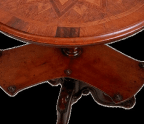A rendezvous for the Arts The Athenaeum, Waterloo Place, London SW1

IN 1813, Parliament approved plans submitted by the architect John Nash for a major new thoroughfare through the heart of the West End of London. His aim was to connect his new and picturesque suburb, Regent’s Park, with Whitehall and Westminster. In the process of constructing this route, he played a leading role in transforming a great swathe of the capital and conceived two public spaces that were named after Britain’s most famous victories in the Napoleonic Wars—Trafalgar Square and Waterloo Place.
The latter, opening onto Pall Mall from Lower Regent Street, originally introduced Carlton House. This was the palatial home of the Prince Regent, who lent his name to many of the principal elements of the scheme. The outward grandeur of Carlton House, however, concealed serious structural problems and, in 1822, it was abandoned by the Prince Regent, now George IV, in favour of Buckingham House on the Mall.
In the summer of 1825, the Commissioners of Woods, Forests and Land Revenues solicited applications for those interested in taking out leases on the site of the empty building, which was approved for demolition
You’re reading a preview, subscribe to read more.
Start your free 30 days





